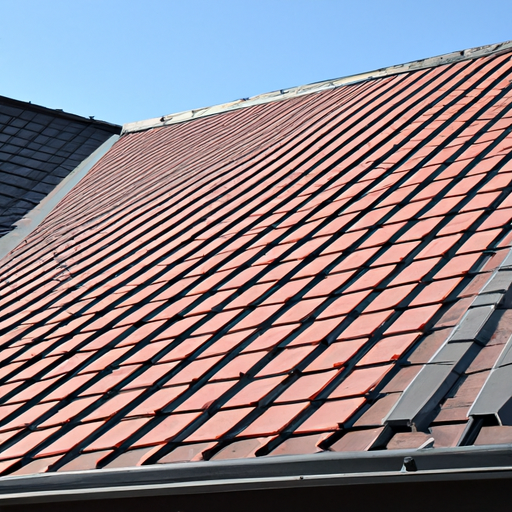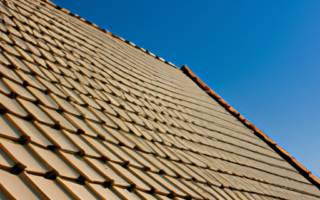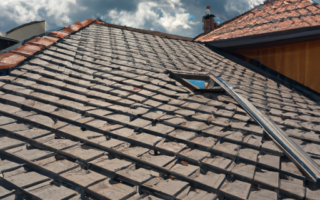Understanding the Fundamentals: Key Elements of Proper Roof Construction
Understanding the fundamentals of proper roof construction is crucial for ensuring the strength and longevity of a building’s roof. Roof construction techniques play a vital role in protecting a structure from external elements, such as rain, wind, snow, and extreme temperatures. By implementing the right techniques, homeowners and building owners can prevent costly repairs and extend the lifespan of their roofs.
One key element of proper roof construction is structural integrity. The roof’s framework, composed of rafters, trusses, and beams, must be designed and built to withstand the weight of the roof covering materials and any additional loads, such as snow accumulation. The proper installation and arrangement of these structural elements are essential for distributing the weight evenly and ensuring the roof’s strength.
Proper ventilation is another critical consideration in roof construction. A well-ventilated roof allows for the proper flow of air, which helps regulate temperatures, reduces humidity, and prevents moisture-related issues like condensation and mold growth. Adequate ventilation can be achieved through the installation of ridge vents, soffit vents, or mechanical ventilation systems, depending on the specific requirements of the building.
Waterproofing is paramount to protect the roof from leaks and water damage. This involves the installation of an effective water barrier, such as underlayment and flashing materials, in vulnerable areas like valleys, chimney surrounds, and roof penetrations. The application of a high-quality waterproof membrane, such as EPDM or TPO, can further enhance the roof’s resistance to water infiltration.
In addition to structural integrity, ventilation, and waterproofing, it is important to consider the appropriate roof covering materials. The choice of roofing materials should align with the building’s architectural style, climate conditions, and budget. Common options include asphalt shingles, metal roofing, slate, tile, and wood shakes. Each material has its pros and cons in terms of durability, aesthetics, and maintenance requirements.
Lastly, engaging professional roofing contractors who are well-versed in proper roof construction techniques is crucial. Experienced contractors have the knowledge and expertise to design and install roofs that meet industry standards and local building codes. Hiring reputable contractors ensures that the construction process follows best practices and that the roof will stand the test of time.
In conclusion, understanding the key elements of proper roof construction is essential for ensuring a strong and long-lasting roof. Structural integrity, ventilation, waterproofing, and appropriate roof covering materials are all vital considerations. By implementing these techniques and hiring skilled professionals, homeowners and building owners can protect their investments and enjoy the benefits of a reliable and durable roof for years to come.
The Role of Quality Materials in Roof Longevity
The role of quality materials in roof longevity is crucial in ensuring a strong and durable roof construction. When it comes to building or repairing a roof, using high-quality materials is essential for long-term performance and protection against various weather conditions.
One of the key factors in determining the longevity of a roof is the type of materials used. Investing in top-grade materials such as high-quality shingles, tiles, or metal roofing can significantly extend the lifespan of a roof. These materials are designed to withstand the elements and provide excellent protection against rain, snow, wind, and UV rays.
High-quality shingles, for example, are made from durable materials such as asphalt, fiberglass, or wood, which offer enhanced resistance to wear and tear. They are also available in a wide range of colors and styles, allowing homeowners to choose the perfect match for their aesthetic preferences. Quality shingles can last anywhere from 20 to 50 years, depending on the specific type and manufacturer.
Similarly, opting for top-quality tiles or metal roofing can greatly improve the longevity of a roof. Tiles are known for their exceptional durability and resistance to fire, insects, and rot. They can last for several decades and are an excellent choice for homeowners looking for a long-lasting roofing solution. On the other hand, metal roofing offers outstanding longevity, with some manufacturers providing warranties for up to 50 years. Metal roofs are not only highly durable but also energy-efficient and environmentally friendly.
In addition to the type of materials used, the installation process is equally important for roof longevity. Hiring professional roofers who are experienced in proper installation techniques ensures that the materials are installed correctly, maximizing their lifespan. Even the highest quality materials will not provide optimal performance if they are not installed properly.
Regular roof maintenance is also essential for prolonging its lifespan. Inspections and repairs should be conducted as needed to address any issues before they escalate into more significant problems. By promptly addressing leaks, damaged shingles, or loose tiles, homeowners can prevent water damage and extend the lifespan of their roof.
In conclusion, the role of quality materials in roof longevity cannot be underestimated. Investing in high-quality shingles, tiles, or metal roofing, and ensuring proper installation and maintenance, is essential for a strong and durable roof that can withstand the test of time and the elements.
Importance of Proper Installation Techniques for Rooftop Strength
When it comes to constructing a roof, using proper installation techniques is crucial for ensuring its strength and longevity. The quality of a roof depends not only on the materials used but also on the way it is installed. Improper installation techniques can compromise the structural integrity of the roof and lead to serious issues down the line.
One key aspect of proper roof installation is ensuring the roof is properly aligned and square. This entails carefully measuring and aligning all components, including the rafters, trusses, and decking, before securing them in place. A misaligned roof can lead to uneven weight distribution and potential sagging or collapse over time.
Adequate roof ventilation is another critical factor that contributes to the strength and longevity of a roof. Proper ventilation helps regulate temperature and moisture levels within the attic, preventing the buildup of heat and condensation. Without proper ventilation, the roof deck and underlying materials can deteriorate quicker, leading to potential structural damage.
Proper installation of flashing and sealants is also essential for maintaining a strong and watertight roof. Flashing, which is typically made of metal or rubber, is used to seal roof joints and prevent water infiltration. Sealants, such as caulk or roofing cement, are applied to further enhance the waterproofing capabilities of the roof. Failing to properly install flashing and sealants can result in water leaks, leading to moisture damage and mold growth.
Additionally, using the correct fasteners and following manufacturer instructions during installation is vital for the overall strength and longevity of the roof. Each roofing material requires specific types of fasteners to ensure proper attachment and stability. Using incorrect fasteners or deviating from the manufacturer’s guidelines can weaken the roof’s structure and increase the risk of damage during extreme weather conditions.
Lastly, hiring a professional and experienced roofing contractor who adheres to industry best practices is crucial for the proper installation of a roof. A skilled contractor will have the necessary knowledge and expertise to employ the correct installation techniques, ensuring the roof’s strength and longevity.
In conclusion, proper installation techniques are vital for ensuring the strength and longevity of a roof. From aligning and ventilating the roof to correctly installing flashing and using the right fasteners, attention to detail throughout the installation process is paramount. By prioritizing proper installation, homeowners can have a peace of mind knowing their roof will withstand the test of time and weather.
Regular Maintenance and Repair: Preserving the Integrity of Your Roof
Regular maintenance and repair are essential for preserving the integrity and longevity of your roof. Neglecting these tasks can lead to serious issues such as leaks, structural damage, and decreased energy efficiency. By implementing a proactive approach to roof maintenance, you can prevent costly repairs and ensure that your roof remains strong and reliable for years to come.
One of the key aspects of regular roof maintenance is conducting routine inspections. These inspections should be done at least twice a year, ideally in the spring and fall, to identify any potential problems before they escalate. During these inspections, you should look for signs of damage such as cracked or missing shingles, loose flashing, deteriorating sealants, and sagging gutters. It’s also important to inspect the interior of your home for any water stains or signs of moisture intrusion, as these can indicate a roofing issue.
In addition to inspections, regular cleaning is crucial for maintaining the condition of your roof. Debris such as leaves, branches, and dirt can accumulate on your roof, clogging gutters and leading to water pooling. This excess water can seep into your roof and cause damage over time. By keeping your roof clean, you can prevent water from pooling and minimize the risk of leaks and structural damage.
Another important aspect of roof maintenance is addressing repairs promptly. Even minor issues such as a few missing shingles or a small leak should be addressed as soon as possible. Ignoring these problems can result in further damage and more extensive repairs down the line. It’s always best to hire a professional roofing contractor for any repairs, as they have the expertise and experience to properly assess and fix the issue.
Regular maintenance also includes taking preventive measures to protect your roof. Trimming overhanging tree branches can prevent them from rubbing against the roof and causing damage. Additionally, ensuring proper attic ventilation and insulation can help regulate temperature and prevent moisture buildup, which can weaken the structure of your roof.
In conclusion, regular maintenance and repair are vital for preserving the integrity of your roof. By conducting routine inspections, keeping your roof clean, addressing repairs promptly, and taking preventive measures, you can ensure the strength and longevity of your roof. Investing in regular maintenance now can save you significant costs and headaches in the future.



